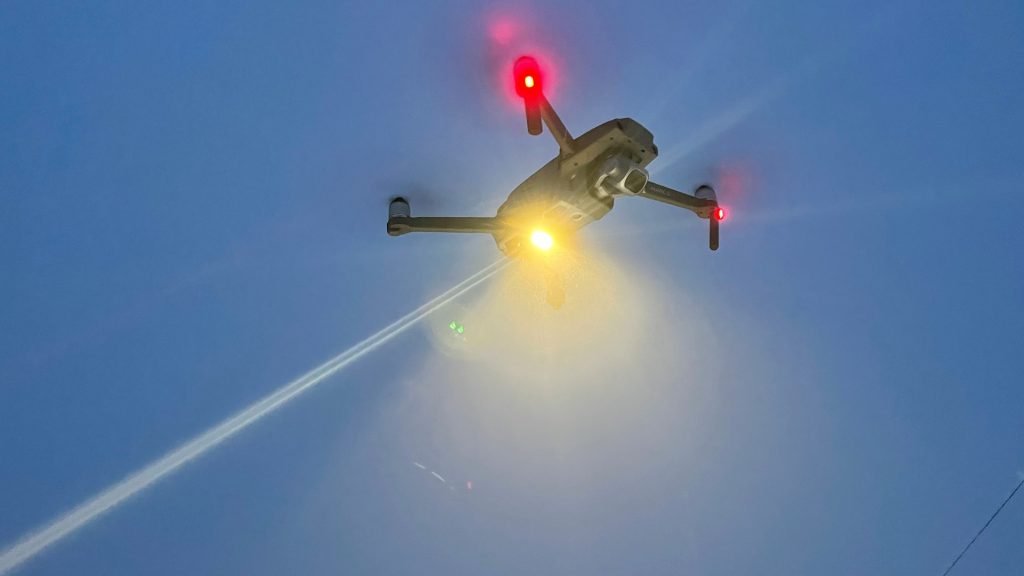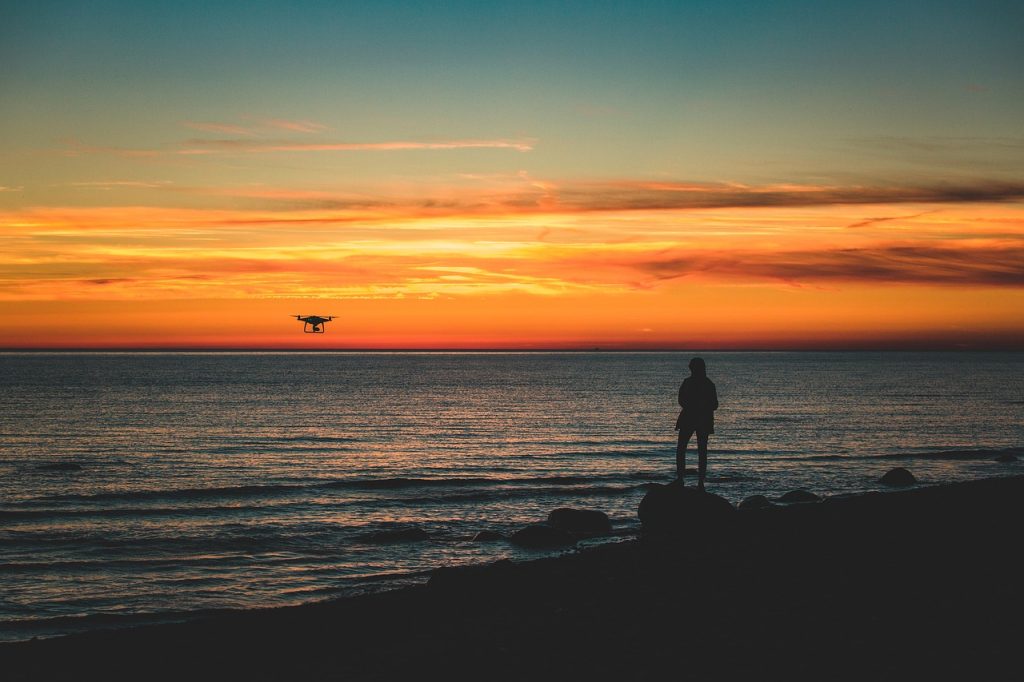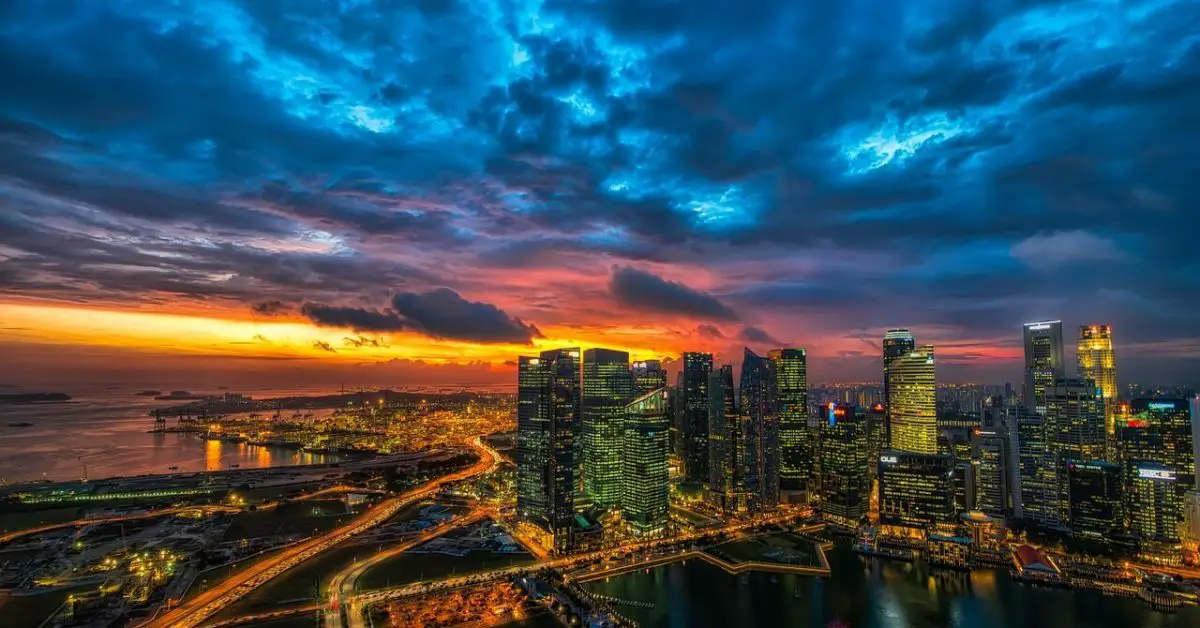Whether you’re a drone enthusiast flying your drone at night to capture stunning images of the world below, or you’re a commercial pilot trying to legally use your drone at night, you’ll need to know if you’re allowed to operate your drone at night.
This has been a question asked by many, and that’s why today we’re going to explain if you can fly your drone at night in 2021.
Yes, you can definitely fly your drone at night as long as you have anti-collision lights on your drone. Recreational flyers only need to practice basic rules and don’t need a licence to fly their drones at night. Commercial drone pilots are also allowed to fly at night without obtaining a waiver for night time flying as long as they have nighttime operations training.
Flying at night can be challenging for many drone pilots and can be a risky process. It introduces a whole new set of skills required and confidence in ones ability to safely operate their drone.
This post will be focusing on laws in the United States with reference to the Federal Aviation Association(FAA).
What Are The Risks Of Flying Your Drone At Night?
There are many risks involved with flying your drone at night. Being aware of these risks and keeping them in mind when operating a drone at night is extremely important to ensure the safe return of your unmanned aerial vehicle (UAV) and the safety of others.
These risks are relevant to both recreational and commercial drone pilots.
At night, you will have low visibility. You won’t be able to see as well as in the day-time, and this may take some getting used to.
You can run into the risk of not being able to see objects such as people or other aircraft. Being familiar with the area you’re operating your drone in is very important to prevent this sort of issue.
Know the areas that commonly have crowds of people so that you can avoid them altogether.
Figure out where obstacles that could damage your drone are located so that you don’t accidentally run into one.
These sorts of things can be very hard to distinguish with low visibility so preparing beforehand is a must.
You will also need to understand the illusion of size at certain distances. What this means is that objects that either have dimly lit lights or lights that are too small may appear to be a different distance then what they actually are.
If the lights are dim, then it will appear to be further than it actually is. If the lights are too bright, then it will appear a lot closer then it actually is.
This can make it very challenging to determine how far an object is from your UAV, so ensuring that you are using working lights that are appropriate for your drone is very important.

You can also find yourself wondering whether an object in the sky is coming closer or moving away from your drone. This goes hand-in-hand with the above risk and can make the situation a lot worse if not properly addressed.
If you find yourself in this situation, it is best to use your best judgement whether that be re-positioning your drone or returning it to your person and ending the flight plan altogether.
What Rules Do You Need To Follow To Fly Your Drone At Night?
Now let’s talk about the rules put in place to ensure the safety and proper use of a UAV for both commercial and recreational operators.
These rules were created by the Federal Aviation Administration(FAA) who controls drone rules and regulations in the United States.
Both recreational and commercial drone pilots will need to maintain visual line of sight with their UAVs. You may also use a visual observer who must be located next to you so that they have direct communication with you.

This is a rule put in place by the FAA that can help you maintain full control of your drone while you are controlling it.
All drones will also need to be registered with the FAA in order to be used at any given time.
Failing to register your drone puts you in serious legal trouble with the FAA.
An issue you may face when flying your drone for whatever purpose is a violation of privacy. Many people may hear your drone from a distance and believe that you are spying on them.
Try and steer clear of populated and residential areas if possible to try and avoid this.
Rules for recreational flyers
There are many rules you will need to follow when using your drone for recreational purposes. Breaking these rules could result in severe legal punishment.
One such rule is to have lights on the drone when being used in the morning, evening or at night. Contrary to commercial drone pilots, recreational drone pilots do not have a specified distance the anti-collision lights need to be visible.
One very important rule that is easy to break is to start using your drone for commercial purposes.
You may sell some of the pictures or videos you take online at a later date. You may also start using some of the images or videos you take to benefit an organisation. This is not allowed and you will need to start flying under Part 107 if you would like to make money off of your drone.
When in doubt, fly under Part 107
Recreational Flyers & Modeler Community-Based Organizations (faa.gov)
Rules for commercial operators
Previously, commercial drone pilots were required to obtain a waiver from Part 107.29-Daylight Operations to be able to legally fly at night.
This became one of the most controversial rules made by the FAA as recreational flyers were exempte from this rule and could operate their drones without going through the long and tedious process of applying for a waiver.
As of March 16 2021, commercial drone pilots no longer need to obtain a waiver to operate a drone at night. They still however need to adhere to the following rules below.
Commercial drone pilots who plan on using their drones at night will be required to have nighttime operations training. This allows commercial pilots to fly at night and over people without the need for a waiver.
This rule from the FAA will also require drones to have remote identification so they are easier to track and control. However, this will go into effect in September 2022.
If you already had a Remote Pilot Certification before the rule went into effect, then you will need to repeat the same testing and training which is now updated to adhere to these new rules.
The FAA requires anti-collision lights that are visible for 3 statute miles. This can help people see your drone including you so that there is less of a chance that someone collides with your drone.
The FAA however does not require you to have position lighting which helps you determine the direction your drone is facing.
Do you agree with the FAA’s new rules for commercial drone pilots?
Tips For Flying Your Drone At Night
Here are a few tips for those planning on starting to fly their drones at night:
- Be aware of your surroundings to avoid any unexpected situations!
- Don’t just focus on the screen, but also look at your drone so you maintain visual line of sight and don’t lose vision of it
- Try and stay at an altitude of over 300 feet when moving around so that you reduce the chance you run into an obstacle
- Get orientation lights on your drone to help you determine which direction your drone is facing
- Get new anti-collision lights on your drone if you’re still using the ones that came with the drone when you bought it as they are not always very bright
Conclusion
Being able to fly your drone at night opens amazing opportunities for both recreational and commercial drone pilots. It provides new job opportunities for commercial pilots that otherwise wouldn’t be available and it allows for some truly gorgeous night time photos and videos for drone enthusiasts.
These rules where put in place for your safety. If you follow them, you shouldn’t run into any trouble.
